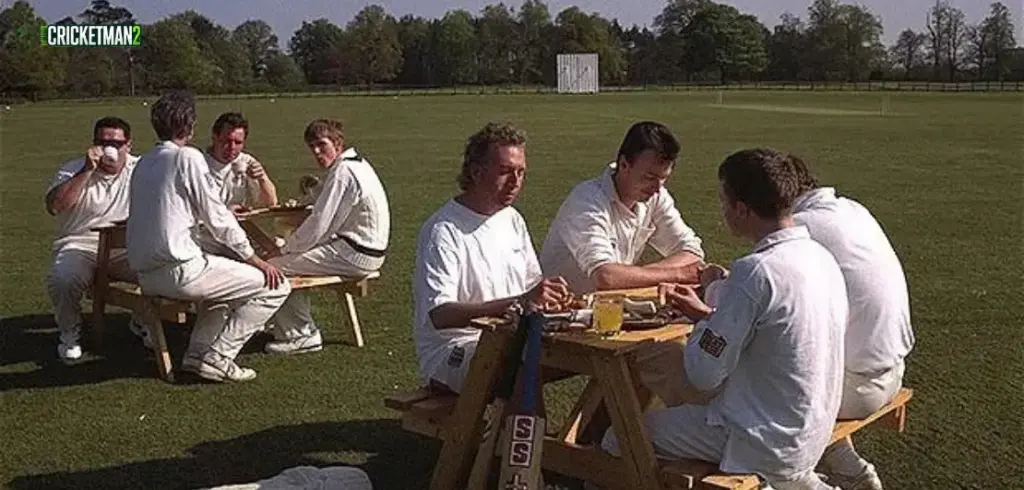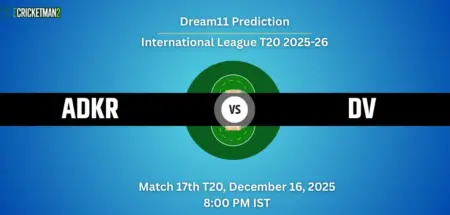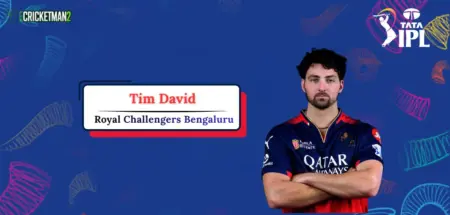In Test cricket — the longest and most traditional format of the sport — the lunch break isn’t just about food. It’s a strategically timed pause in a high-pressure day of cricket that affects not only players’ stamina and game plans but also the overall rhythm of the match. From specific laws to real-world match scenarios, here’s everything you need to know about lunch break timing in Test cricket.
The Official Rule: What the Laws Say
According to the MCC Laws of Cricket, lunch is taken after the first session of play, which typically lasts two hours. Here’s how it works:
| Condition | Standard Scenario |
|---|---|
| Session Start Time | ~11:00 AM local time |
| Lunch Break Time | ~1:00 PM local time (after 2 hours of play) |
| Duration of Lunch | 40 minutes |
| Governing Rule | MCC Law 12.2 (Test playing conditions) |
| Flexibility for Over Rate | Adjusted if 30 overs not completed |
However, if the first session extends due to slow over rates or other delays, lunch may be taken slightly earlier or later depending on when a logical interval arrives (usually the completion of an over).
Read Also:- Tea Break Time in Test Cricket
Weather & Rain: Does It Affect Lunch?
Yes, lunch break timing is not rigid when external factors like rain or bad light disrupt the match. Scenarios include:
- Play delayed at the start: Lunch might still occur at the standard clock time with fewer overs bowled.
- Rain close to lunch: Umpires may advance the break and resume later.
- Interrupted overs: Lunch is ideally not taken mid-over unless necessary.
Impact on Players & Strategy
The lunch interval isn’t just a meal break; it’s a strategic reset for teams.
Batsmen:
- A long first session can tire out top-order batters.
- If settled at the crease, lunch can break rhythm and focus.
Bowlers:
- Fatigue before lunch may reduce effectiveness.
- Fast bowlers prefer breaks after long spells to recover.
Captains:
- Use the break to reset field placements and bowling rotations.
- A delayed lunch can influence tactical decisions, especially near session breaks.
Day-Night Tests: Dinner Instead of Lunch
In day-night Test matches, traditional lunch is replaced by dinner and tea:
| Session | Break Name | Approx. Time |
|---|---|---|
| First Session | Dinner | Around 5:00 PM–5:40 PM |
| Second Session | Tea | ~7:30 PM (20 min) |
These changes are critical because twilight often creates tricky batting conditions, and teams may adjust strategies to avoid batting during that period.
Case Studies: When Lunch Changed the Game
One famous example is the 2014 Lord’s Test between England and India, where early lunch allowed India to regroup. After the break, Ishant Sharma delivered a match-turning spell. Lunch, in this case, directly shifted momentum.
Another key instance was the WTC Final 2021, where frequent rain interruptions forced umpires to shuffle break timings, ensuring fair playing time for both teams in tight daylight windows.
Fans & Broadcasters: Lunch Beyond the Field
While players recharge, fans and broadcasters stay active:
- Broadcasters show session highlights and expert analysis.
- Viewers often check social media or discuss match predictions.
- At stadiums, fans grab snacks, visit washrooms, or stretch.
Interestingly, terms like “Has lunch been taken?” trend online during weather interruptions when the schedule becomes unclear.
Read Also:- How to Calculate Follow on in Test Cricket
Common Myths Around Lunch Break
| Myth | Reality |
|---|---|
| “Lunch is always at 1 PM.” | Depends on match start time and over completion. |
| “Lunch is skipped if the day starts late.” | No, it’s typically rescheduled, not cancelled. |
| “Teams decide when to take lunch.” | Breaks are solely umpire-controlled. |
| “Lunch is just food and rest.” | It’s also used for analysis, tactics, and fitness prep. |
What Happens During Lunch?
Players typically:
- Eat meals tailored to their roles (light for bowlers, filling for batters).
- Change into fresh kits.
- Meet coaches and physiotherapists.
- Watch replays and plan for the next session.
Final Word: A Quiet Pause, A Strategic Weapon
Lunch breaks in Test cricket are far more than just meal times. They’re built into the game to offer physical relief, strategic regrouping, and fair scheduling — both in traditional red-ball games and modern pink-ball contests. Whether you’re a die-hard fan or a new viewer, understanding this subtle yet critical part of Test cricket will deepen your appreciation of the sport.




